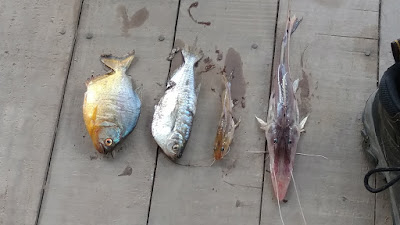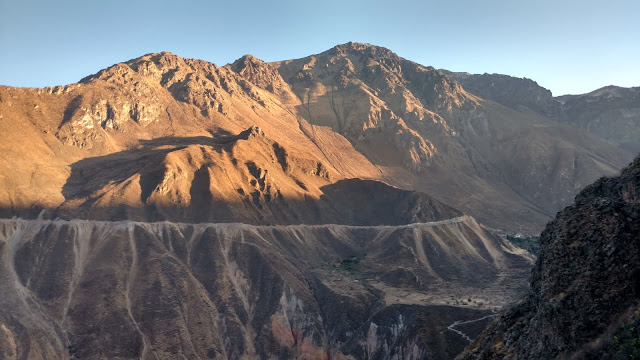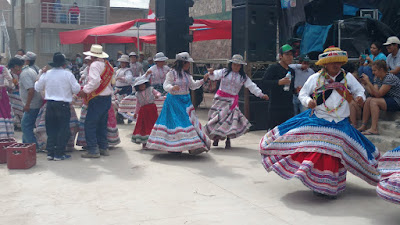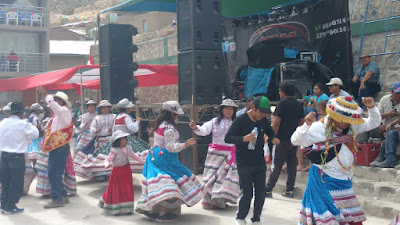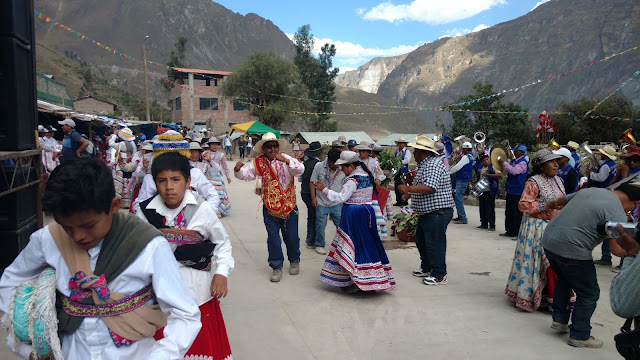 |
| the riverbank of the Tombopato |
It's pitch dark, save the starry Amazonian sky. Our guide scans the banks with a high beam of light, in hopes of catching the red glow reflected back by the animals of the jungle. A pair of capybaras are spotted, though it's too dark to appreciate their form as they quickly hide, submerging themselves beneath the murky water.
video: the Tombopato River, just after sunrise
The sun rises sometime after 5 AM, soon after we veer away down a maze of smaller tributaries before we finally dock on a muddy bank. I step out of the boat, my boots sinking deep into what's nearly quicksand. It takes great effort to haul myself up the bank.
video: this is the riverbank I speak of above, and walk to the clay lick
through the drenched pathways of the jungle
 |
| The Tombopato Reserve macaw clay-lick (on the right) from afar as the birds arrive |
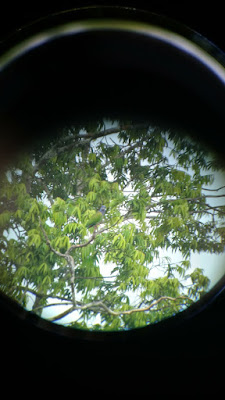 |
| blue headed parrot- can you spot it with what is otherwise perfect camoflauge |
A five minute walk through the water laden ground, and we emerge at the observation area of the clay-lick. The dawn air is thick with mist and voracious mosquitoes which my arms windmill away, swatting a few in the process. |
Right on schedule at 6 AM the first wave of birds rolls through, in this case green and blue headed parrots with a few of the larger macaws intermixed.
It's rather fascinating to watch bird behavior mirror that of humans. When the parrots first arrive, they sit in the trees above the clay-lick, surveying, cautious, wary of predators, specifically their eternal nemesis, the Harpy Eagle. ...
Then one brave bird ventures down and begins to pick at the clay. Thirty seconds later another one joins, and following the psychological principle of "social proof" (defined by the belief that what everyone else is doing must be right/ safe) the rest of the birds follow suit and join.
 |
| green parrots + a few macaws- first feeders |
The birds continue to feed until they've either had their fill, or are frightened away by a predator. When it's the latter, they fly away in unison, squawking the entire flight.
Some of you might ask, and rightfully so, I thought parrots ate fruit? Well yes, they do, and the clay lick offers the birds minerals which detoxify their body. (holistic healers rejoice)
Waves of parrots descend upon the clay-lick, cautiously nibbling, then leaving, making way for a new groups of feeders.
While mixed, most waves contain a predominant number of birds from a single species, today ranging from the early feeders- blue headed and green parrots, which give way to red and green macaws, then blue and gold, then finally followed by the scarlet macaws who close out the diner.
The birds nip and dig into the nutrient rich cliff until 10 AM. We're there for a full stimulating and awe inspiring four hours.
This was by far the highlight of the time I spent in the Amazon Jungle, and not to be missed. Absolutely fascinating and intoxicating.
by far the best video I took. It starts with a look at the claylick from afar, then jumps to the view of the feeding macaws through the telescopic lens, then at around the 1:35 mark, the birds get scared and fly away in unison, squawking the whole time.
 |
| birds feeding on the clay-lick at 4x zoom- you can see other in the trees (from well over 100 meters away) |
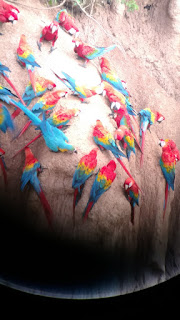 |
| blue + gold with scarlett macaws |
video: watch macaws gingerly descend on clay-lick  |
| blue + gold macaw with scarlett macaws in trees |
 |
| feeding time |
 |
| scarlet macaws @ Tombopato clay-lick |
 |
| macaws @ clay-lick Tombopato Reserve |
 |
| such beautiful birds (red + green intermixed with scarlet macaws |



























